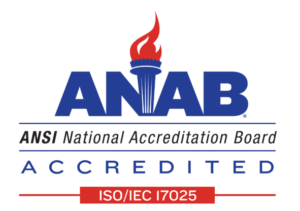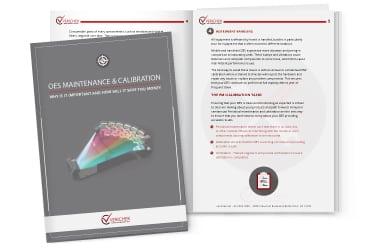
Proper metal sample preparation is essential for conducting accurate Optical Emission Spectroscopy (OES) metal analysis. This article explores the importance of metal sample preparation for OES analysis, the techniques involved and best practices to ensure reliable results.
Understanding OES Metal Analysis
Optical Emission Spectroscopy (OES) is a powerful analytical technique used to determine the elemental composition of metals and alloys. It delivers fast and accurate data, making it valuable for material certification, quality control, and identifying unknown materials. It works by exciting atoms in the sample, causing them to emit light at characteristic wavelengths. The intensity of this light is measured to determine the concentration of elements within the sample.
OES as a Production Control System in the Metal Industry
Optical Emission Spectrometers (OES) are integral to production control in the metal industry due to their precision and rapid analysis capabilities. OES allows for fast and accurate chemical analysis of materials, making it essential for primary alloy foundries, metal processing industries, and the mechanical industry. This technology ensures quality and compliance at any stage of the production cycle, providing real-time data that helps maintain consistent product standards and quickly identify any deviations.
The Art of Sample Grinding During Metal Preparation
One of the critical steps in metal sample preparation for OES analysis is grinding. Proper grinding ensures a flat, even surface, which is crucial for accurate results. During grinding, it’s essential to avoid swirl marks and cross-hatching, as these can introduce inaccuracies in the analysis.
Characteristics of a Properly Ground Sample
A properly ground sample should have a level surface with uniform scratch patterns. The quality of the surface significantly impacts the analysis outcome. Any imperfections or irregularities can lead to inconsistent results. A quality ground sample ensures that the emitted light during OES analysis is consistent and reliable.
Advanced Techniques in Sample Preparation
For more complex analyses, advanced sample preparation techniques may be required. Two notable methods include:
Microwave Digestion
Microwave digestion uses microwave energy to heat acids and dissolve metal samples. This technique is fast and efficient, making it suitable for preparing samples with complex matrices.
Acid Dissolution
Acid dissolution involves using strong acids to dissolve metal samples completely. This method is particularly effective for analyzing metals with high resistance to other forms of preparation.
Challenges and Solutions in Metal Sample Preparation
Metal sample preparation can present several challenges, including:
- Surface Contamination: Ensuring the sample surface is clean and free from contaminants is critical. Solutions include using clean grinding materials and thorough cleaning procedures.
- Inconsistent Grinding: Achieving a uniform grind can be difficult. Best practices include using consistent pressure and motion during grinding and regularly checking the sample surface.
By addressing these challenges with proper techniques and best practices, accurate and reliable OES analysis results can be achieved.
Wrapping Up: Properly Prepare Your Metal Samples
Proper sample preparation is vital for accurate OES analysis. Ensuring a flat, even surface free from contaminants and irregularities is essential. Advanced techniques like microwave digestion and acid dissolution can further enhance the quality of sample preparation. By following best practices and addressing common challenges, reliable and accurate results can be consistently obtained.
Contact us today to learn more about how we can help.

